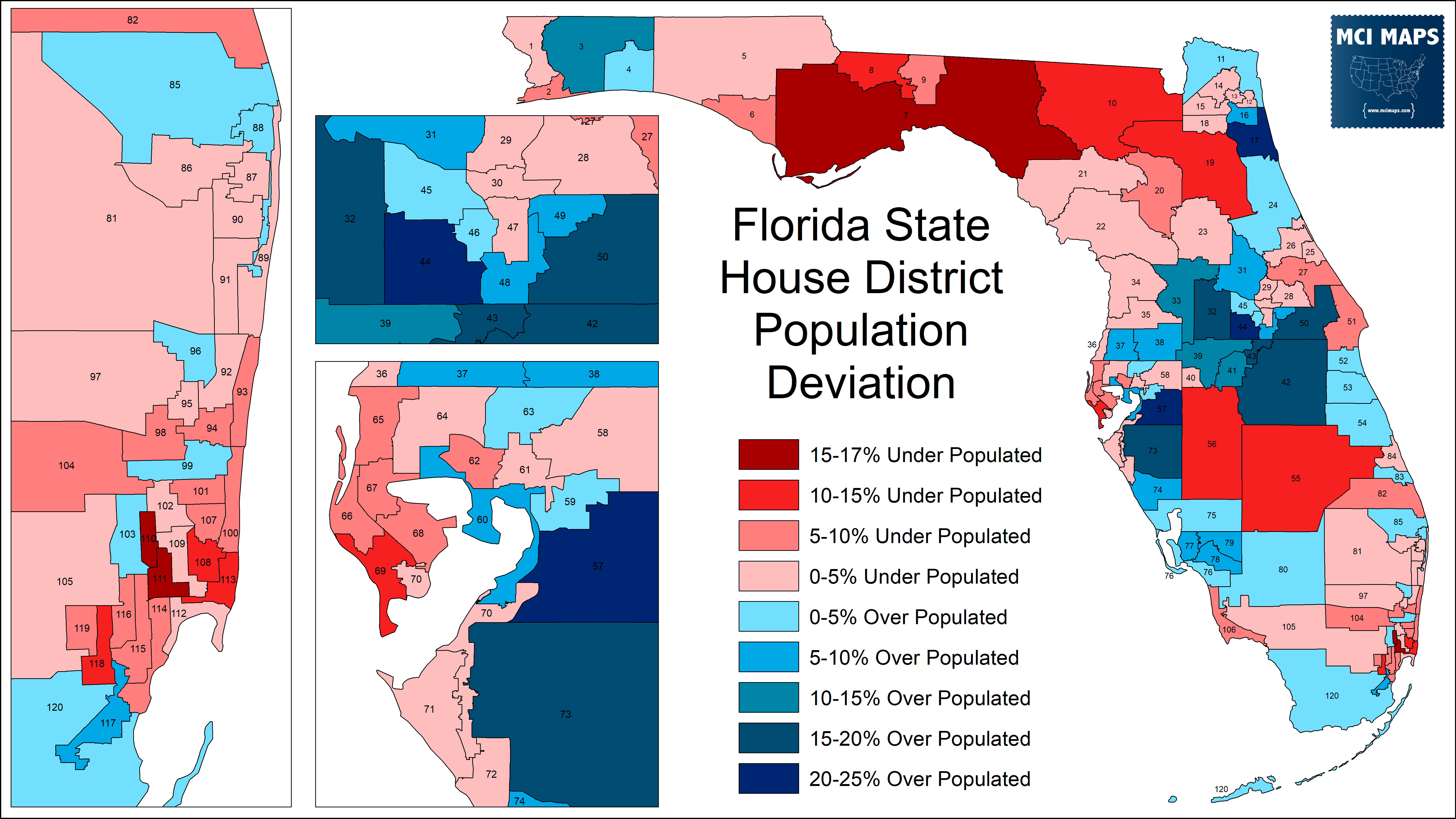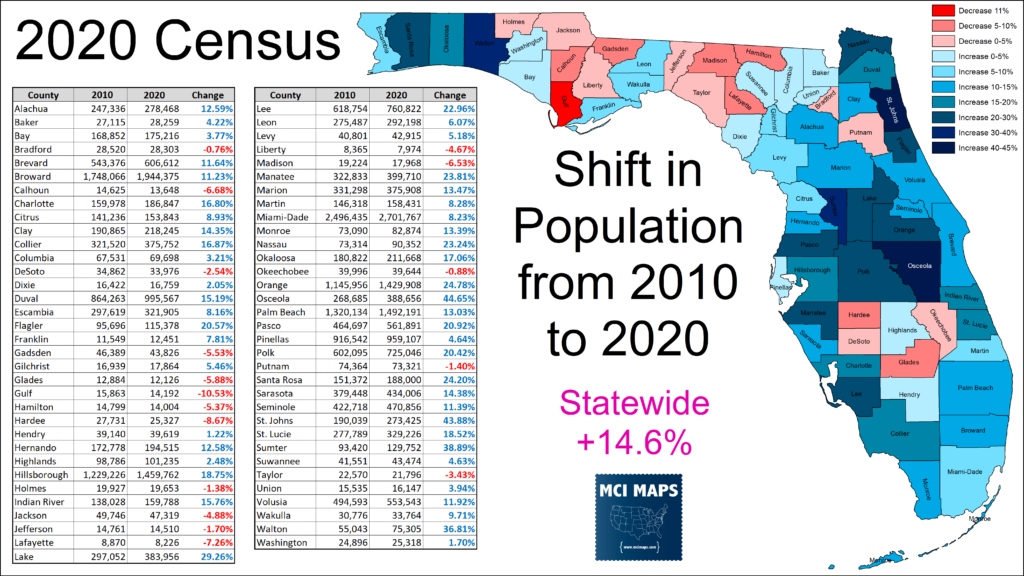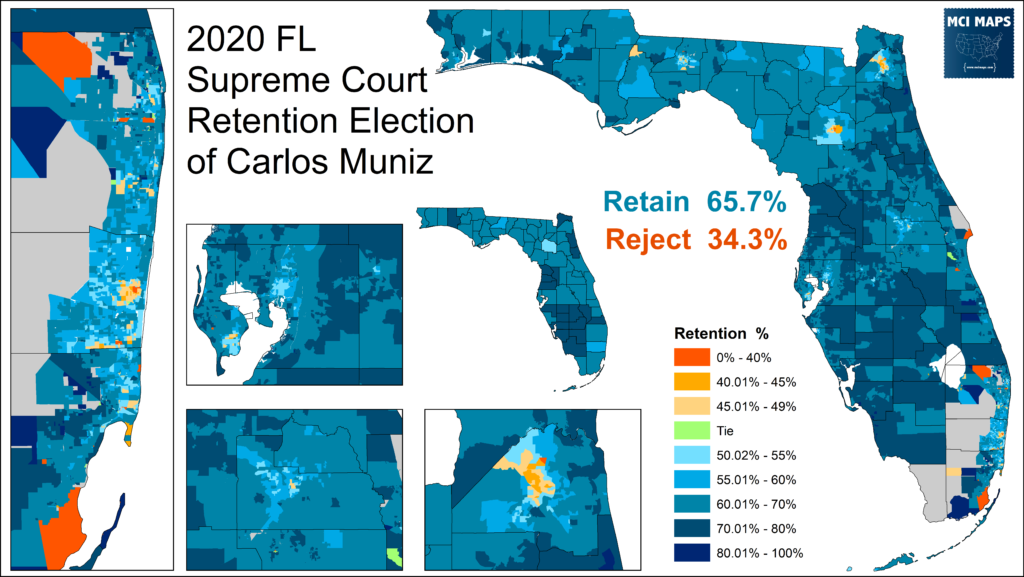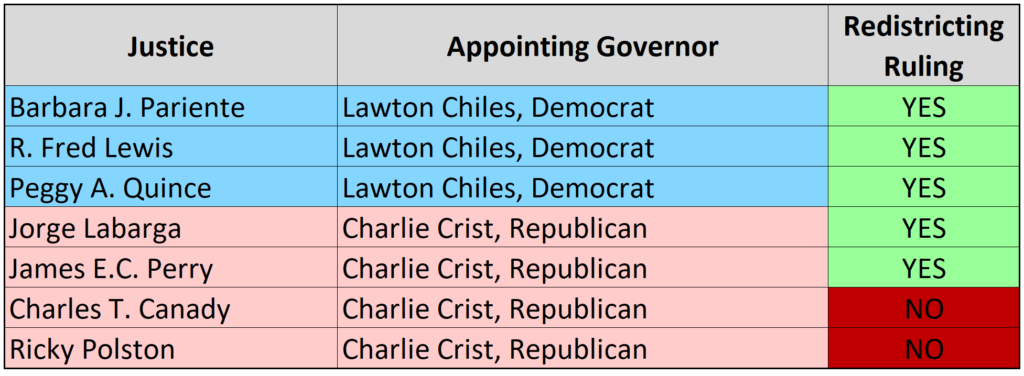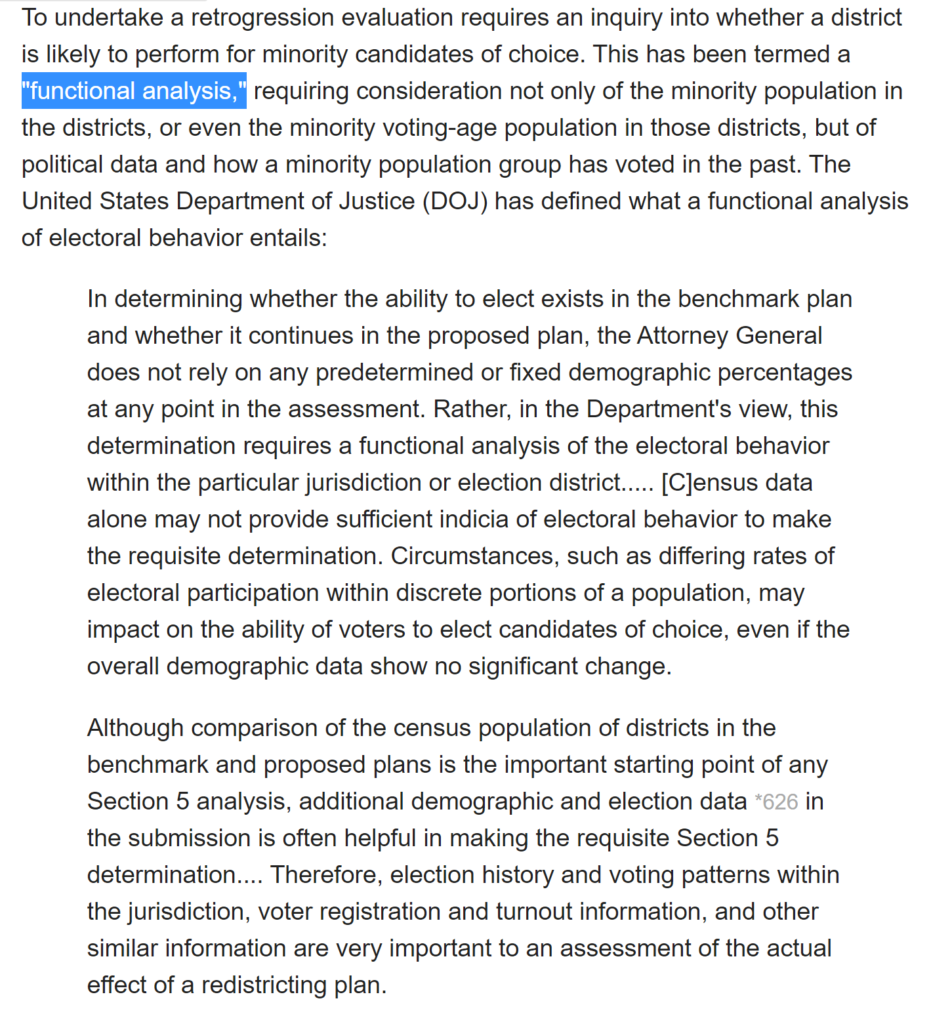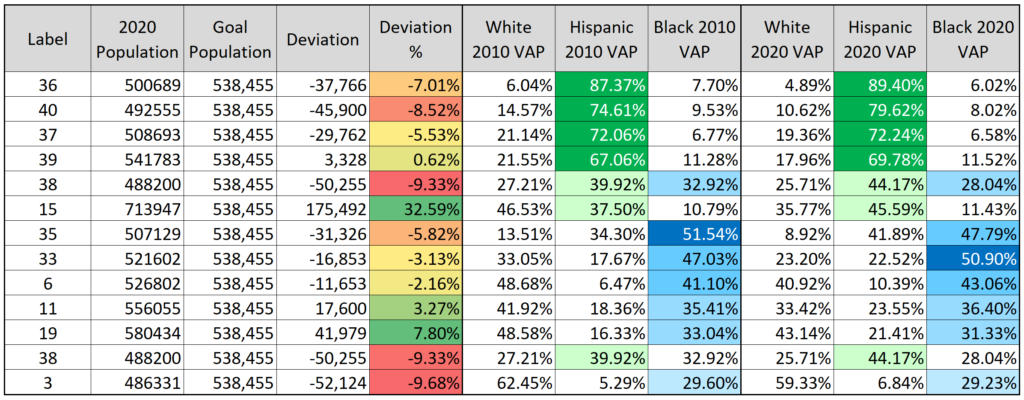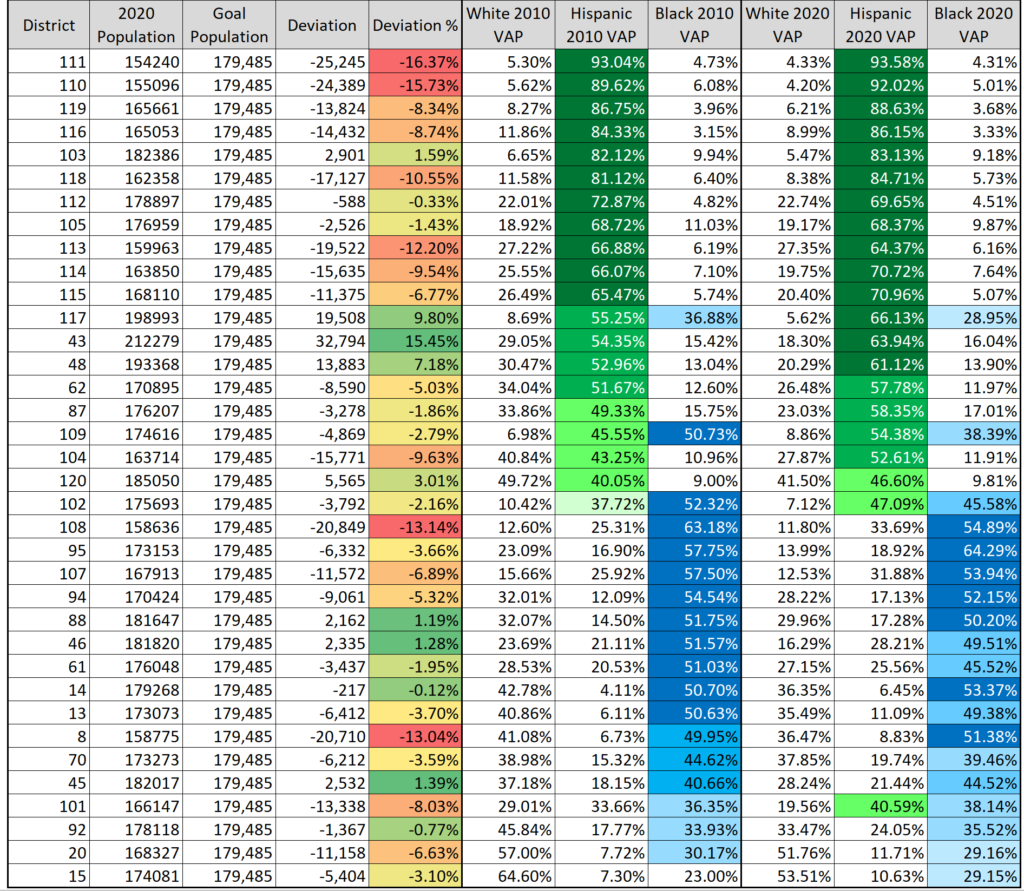Over the last few months, I have worked on a series that documented the history of redistricting in Florida. Having wrapped that series up, we now move on to the 2021/2022 redistricting process in Florida. The task has just gotten underway; with the Florida legislature launching its Florida Redistricting Website just last week. Over the next few months, the redistricting committees will begin to meet and work on drafting maps. Public input will also take place, though the exact nature of that may depend by the committee. There is also still a debate going on over holding public hearings at meetings or relying on folks submitting comments to the website. The site also includes a program to draw your own maps – though as of this writing its still not populated with all the political and survey data needed.
As the legislature begins its redistricting process, I will continue to cover their work while also working on a series of articles looking at possible plans in different regions of the state. The first regional article, looking at key North Florida areas, will begin next week. For this article, I want to look at the state of play as we head into this process.
Census Data
As everyone knows, census data was delayed due to the COVID pandemic. The first information we received was statewide population and Congressional allocation. This data revealed, shockingly, that Florida would only gain one Congressional district.
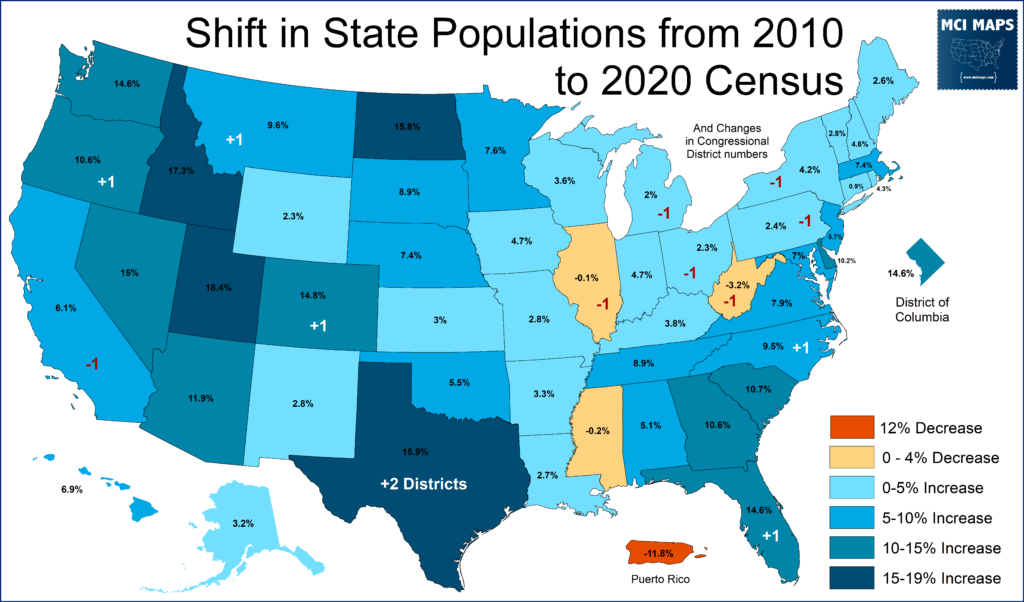
Florida was largely expected to gain two districts. The reduced growth has led to talk of a possible undercount (not helped by Florida’s weak census push). However, that is a discussion for another time (nor do I have the answer). Much more comprehensive research is needed. Every census does lead to concerns of undercounts – which can be made worse by poor state planning or fears in the population. Many have speculated Trump’s push for citizenship and immigration status questions led to Hispanic undercounting. The same census undercount worries exist in Florida’s Haitian community.
As I said, the undercount issue is an issue for another day. Lets delve into the data we have.
At the county level, most of FL gained population. However, 17 counties (all rural) lost population.
Osceola and St Johns led in county growth – increasing by over 40% in population. The central Florida region easily led in population growth.
Florida also continued to grow more diverse.
Hispanic’s continue to be the biggest source of growth in Florida. It is almost a guarantee Florida will be less than 50% white midway through the decade.
How the Districts Look
Florida will gain a new congressional district; and from the way the current districts look, the new seat is likely to end up in the Central Florida area. Three of Florida’s northern districts are under-populated and need to take in new voters. Meanwhile, the 9th is more than 20% over-populated. It will need to lose a staggering 180,000 people.
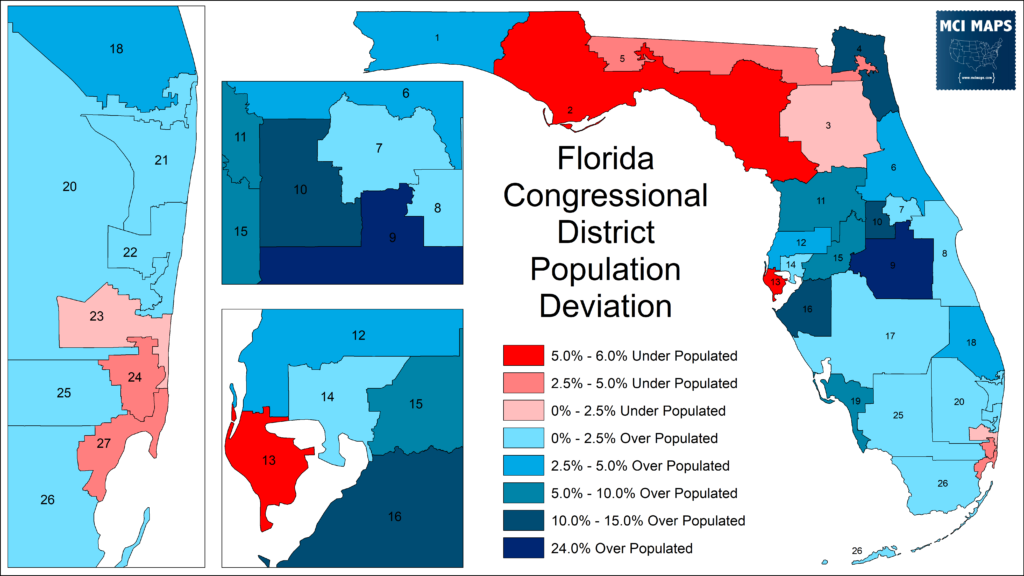
“Where” this new seat winds up will depend on the exact lines, but expect it somewhere between Tampa and Orlando.
Looking at the State Senate map, multiple districts will need to gain new voters. The story is the same here – with central Florida way overpopulated. SD-15 rules above all others, with 30% more voters than needed. Meanwhile SD-3, 9% underpopulated, will get even larger as it has to expand east. It will be the largest district (by land size) when the final remap is done.

The State House shows the same story. North Florida and rural Florida is underpopulated, while central Florida needs to lose people. Its clear southeast Florida will lose influence. This is going to force more districts north. Some politicians may find themselves without seats for themselves.
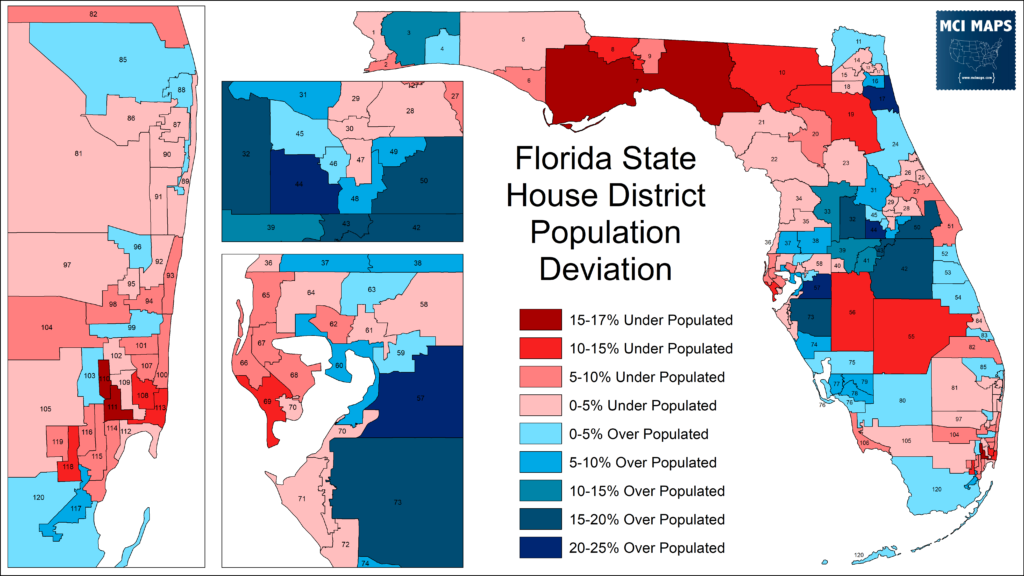
So these are the raw numbers. However, we all know redistricting is a political exercise. So lets talk about the politics.
Political Climate in Florida
Current Political Dynamic
Florida is in a pretty unique political situation when it comes to redistricting. Republicans sit on total control, so you’d think they’d be able to draft an aggressive gerrymandering. After all, that’s what they did in the 2002 remap. However, Florida now has a series of redistricting regulations. In 2010, voters approved the Fair Districts amendments – which set up any gerrymandering provisions in the Florida legislature. The measures created two criteria for redistricting.
- Tier 1 – Lines cannot be drawn to favor or disfavor an incumbent or party. Districts also cannot be drawn to diminish the ability of racial or language minorities to elect candidates of their choosing. Districts must be made up of contiguous territory.
- Tier 2 – Districts must be compact, as equal in population as possible, and honor administrative boundaries when possible.
These measures passed, but with opposition coming from Republicans. I wrote about the path to the ballot and subsequent campaign here.
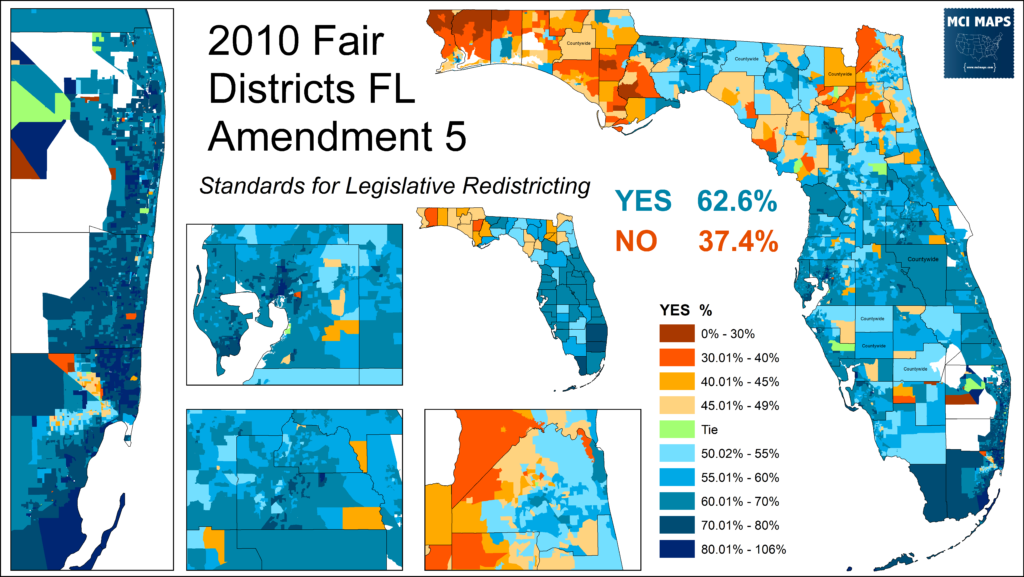
In 2012, Republicans did not like that they were being constrained by the Fair Districts amendments. In 2011 and 2012 they worked to constrain the ballot measure rules. In the end, they would work behind the scenes to gerrymander the maps; drawing them in secret. The discovery of this would lead to the 2015 redistricting sessions. During these sessions, the Republican party devolved into infighting. They were unable to agree on maps, and in the end the court was forced to chose plans.
So is that likely to happen this time? No. Unfortunately for Democrats, the Republican caucus is much less divided than it was in 2015. The House and Senate were in the middle of power struggles that went well beyond in redistricting. In addition, the Senate was in the middle of a nasty race for Senate President. These issues killed unity in the caucus. This time, there is far less tension. Sure there are blow-ups and show-downs, but their is much less rivalry at this point than six years ago.
The real question is how aggressive the Republicans want to be. Many conservatives hope the legislature will engage in strong gerrymanders. Nationally, there is pressure for Republicans to net multiple congressional districts out of Florida. The question is, do the Republicans in charge now want to risk the lawsuits that brought down the 2012 maps?
We will see.
Supreme Court Dynamic
In 2012 (read more here) and 2015 (read more here) the Florida Supreme Court was not a friend to the Republican legislature. The court ordered redraws in 2012 of a few key Senate districts. In 2015, they struck down the entire Congressional map and ordered a special session. The court, then under a liberal 5-2 majority, wrote extensively about the Fair Districts amendments, racial representation, and functional analysis. They set up rules and standards for adhering to the Fair Districts amendments while also preserving minority rights. They also had zero tolerance for legislative gerrymandering.
However, this is not the same court in 2021. Four of the liberals have retired (Florida has a mandatory retirement age). The court now sits on a 6-1 Conservative majority. I wrote about this shift in the court, and what it has done to the retention elections for justices, in my latest substack newsletter. I recommend that read for more details on the court situation.
Of the five justices who struck down the Congressional map in 2015, only Jorge Labarga remains.
So what does a more conservative court mean for redistricting. Well there are two issues at play. First, after the legislature passes its State House and State Senate plans, the court must issue a ruling on them. Note, the court does not have a say in the Congressional map. This review by the court is a much more streamlined process than most redistricting trials. The court must make a decision within 30 days of getting the maps. In 2012, the Court examined the districts to confirm if they preserve racial representation and adhered to the new Fair Districts amendments. The court heard testimony from defenders and opponents to the maps. In the end, the court upheld the House plan, but struck down specific Senate districts. Those were quickly redrawn and the court gave a final sign off.
What should we expect from this new court in 2022? I’d expect the court will give the thumbs up to any GOP plan to pass. The court is likely to give a good degree of deference to the legislature – with only an extreme gerrymander (and likely one that hurts minority representation) triggering court interference.
The real question is what the court will do if a 2015 situation arises – where a lower-court trial found that lawmakers violated Fair Districts and drew the maps in secret. Will a more conservative court allow the GOP to just flaunt the law? Will they only act if forced?
Remember – a sign-off of a plan in 2022 does not shield it from future suits. The 2022 ruling will be a narrow on-the-face ruling of a map that it got 30 days ago.
Minority Representation
There are two laws in play when it comes to minority districts in Florida. There is Section 2 of the Voting Rights Act, which can mandate the formation of a minority district in cases where a majority-minority seat can be drawn. Now, the legal precedent does not mean 50%+ is needed if the seat can perform as a minority district with under 50%. Districts like FL-20 or FL-24, longtime African-American districts, have fluctuated between 50%+ and high 40s BVAP over the years. The minority share of a district is also a factor of racial polarization, turnout dynamics, and citizenship status. As I’ve talked about in my redistricting history, Miami-Dade’s Hispanic districts have long been over 60%+ Hispanic to account for citizenship shares and turnout dynamics. Getting a district to 50% and declaring victory is not always enough.
The other main law in play here is the Fair Districts Amendments and the rules against retrogression; aka the diminishment of the ability of minority voters to elect candidates of their choosing. The Fair Districts amendments incorporated anti-retrogression language that was originally from Section 5 of the VRA. This creates a standard where once a minority-performing district is working in Florida, it is protected – even if its under 50% minority. The way to judge a minority-performing district includes past election results and turnout dynamics. This is known as functional analysis and I’ve talked about it extensively in the history series. The Supreme Court of Florida talked about it extensively in 2012. Both chambers have used functional analysis in past mapping sessions.
On the Congressional front, these rules could restrict Republican gerrymandering. The fantasy of conservatives is that the east-west 5th district can be ended and reverted to a North-South configuration. Conservatives would love to do this since it would likely destroy the Democratic slant of the Orlando-based 10th. However, the rules around retrogression hurt this effort.
- FL-05 is less than 50% BVAP, but it is over 65% black in a Democratic primary and safe Democratic
- FL-10 is less than 50% VBAP, but it is over 50% black in a Democratic primary and safe Democratic
Using functional analysis, which is a staple of Florida redistricting, both districts are shown to perform as minority seats. They are protected by Fair Districts’ rules against retrogression.
This dynamic is not limited to the Congressional map. Many legislative seats are under 50% black or Hispanic, but that is not the only criteria for determining a minority seat. Section 2 of the VRA may rely on 50%+, but the retrogression rules in Florida’s Constitution, thanks to Fair Districts, protect additional seats as well. Once a minority-performing seat is on the board (like the 5th and 10th) – then removing them is a major red flag.
These rules will effect many legislative seats as well. Many are longtime minority-performing seats with under 50% minority populations. Others haven’t been but are now growing more diverse. We will delve into these districts more and how remaps may have to work for preserving minority representation – but I’ll leave that for the region-by-region series I plan to do. But these are some key minority-access or minority-performing seats.
These are notable state senate seats
And these are notable state house seats.
I have a google sheet here with all districts and their respective data.
You can view the entire google sheet here.
Like I said, we will delve more into these districts as we go on the region-by-region tour.
Conclusion
I highly recommend giving my redistricting history series a read. This history adds a great deal of legal and political context – and explains why many interested parties operate the way they do with redistricting. As I move into a regional examination of possible district maps, I will be drawing not just from the legal mandates that exist, but also the history of maps in each area.

